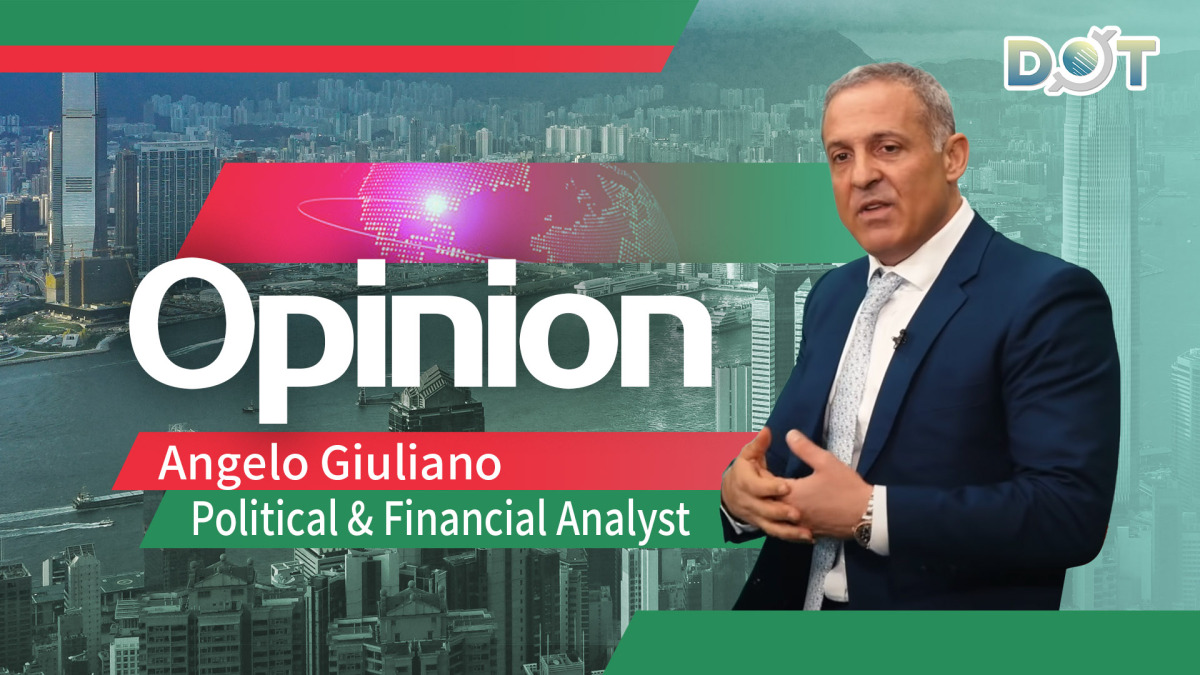
By Angelo Giuliano
"The 2009 Brookings Institution report, Which Path to Persia? Options for a New American Strategy toward Iran" details nine strategic options aimed at undermining Iran's sovereignty, primarily targeting its nuclear program and regional influence to achieve regime change. Below is an expanded analysis of each option, emphasizing their implications for Iran, their roots in U.S. imperialist motives, and their relevance to the 2025 Israeli strikes, which align with the report's proxy-war framework. Each option is designed to pressure, destabilize, or directly attack Iran, often cloaked in diplomatic or security pretexts, while ignoring Iran's historical grievances and legitimate security concerns stemming from events like the 1953 CIA coup and U.S. support for Saddam Hussein during the Iran-Iraq War (1980–1988).
Expanded Options from the Report:
- Diplomatic Engagement (Persuasion)
This option proposes offering Iran incentives, such as economic aid, trade normalization, or security guarantees, to halt its nuclear program. However, the diplomacy is a calculated facade, designed to fail due to Iran's deep mistrust of U.S. intentions, rooted in betrayals like the 1953 coup that ousted Prime Minister Mohammad Mossadegh and the U.S.'s refusal to honor past agreements. When Iran, wary of bad-faith negotiations, rejects or questions the terms, the U.S. can portray it as intransigent, rallying international support for harsher measures like sanctions or military action. This tactic mirrors the lead-up to the 2003 Iraq invasion, where diplomatic overtures were used to justify war after Saddam Hussein's non-compliance. For Iran, this option is a trap, offering no genuine path to sovereignty or security, as accepting U.S. terms would likely require compromising its independence or regional alliances, such as with Hezbollah or Syria.
- Sanctions
Economic sanctions aim to strangle Iran's economy by restricting its oil exports, banking access, and trade, ostensibly to pressure its government into nuclear compliance. In practice, sanctions devastate civilians, causing shortages of food, medicine, and essentials, while entrenching the regime's resolve to resist external coercion. Iran's experience with sanctions since the 1979 Islamic Revolution, intensified after 2009, has led to widespread suffering—e.g., skyrocketing inflation and limited access to life-saving drugs—while failing to halt its nuclear advancements. The report acknowledges sanctions as a slow-burn strategy, often paired with containment, to weaken Iran over time, but it underestimates Iran's resilience, built through decades of adapting to Western economic warfare. This option prioritizes U.S. geopolitical goals over Iranian lives, echoing the humanitarian toll of sanctions on Iraq in the 1990s.
- Containment
Containment seeks to limit Iran's regional influence through military alliances (e.g., with Gulf states like Saudi Arabia), forward U.S. military presence, and economic isolation. By encircling Iran with hostile neighbors and U.S. bases, this strategy aims to deter its "aggression" while signaling readiness for escalation. For Iran, containment feels like a siege, reinforcing its need for defensive measures like nuclear technology or proxy forces (e.g., Hezbollah). The report frames containment as a way to buy time for other options, such as regime change, but it risks provoking Iran into asymmetric responses, like cyberattacks or militia attacks on U.S. assets. Iran's historical memory of U.S.-backed aggression during the Iran-Iraq War, including the 1988 downing of Iran Air Flight 655, fuels its perception of containment as a precursor to war, not a peaceful strategy.
- Regime Change via Diplomacy
This option involves supporting Iran's reformist factions or pro-Western elites to foster a government aligned with U.S. interests, ideally through elections or internal political shifts. The report suggests funding NGOs, media, or dissident groups to amplify pro-American sentiment, exploiting Iran's domestic unrest (e.g., the 2009 Green Movement). However, Iran's government, scarred by the CIA's 1953 coup that installed the Shah, is vigilant against foreign interference, often cracking down on perceived Western agents. This strategy underestimates the Islamic Republic's ideological cohesion and popular support, particularly among those who view the Revolution as a bulwark against imperialism. For Iran, this option is an existential threat, as it seeks to erode its revolutionary identity and replace it with a pliant regime, risking internal chaos akin to post-2011 Libya.
- Regime Change via Insurgency
This approach advocates arming and funding anti-government groups, such as the Mujahedin-e-Khalq (MEK) or ethnic separatists (e.g., Baluch or Kurdish militias), to wage insurgency against Tehran. The report acknowledges the MEK's cult-like nature and lack of domestic legitimacy but sees it as a useful tool to destabilize Iran. This option risks plunging Iran into chaos, as seen in U.S.-backed insurgencies in Syria or Iraq, where arming rebels led to prolonged conflict and extremist blowback. Iran's government, aware of U.S. support for Saddam Hussein's war and chemical weapons use in the 1980s, views such interference as a continuation of existential hostility. For Iranians, this strategy threatens national unity and stability, potentially fracturing the country along ethnic or sectarian lines while inviting foreign exploitation.
- Airstrikes
Precision airstrikes on Iran's nuclear facilities, such as Natanz or Fordow, aim to delay its nuclear program without committing to a full invasion. The report notes the challenges: Iran's dispersed and fortified sites, its ability to retaliate via missiles or proxies like Hezbollah, and the likelihood of rallying domestic support for the regime. Airstrikes would likely escalate tensions, potentially triggering a broader conflict, as Iran could target U.S. bases in the Gulf or disrupt oil shipping through the Strait of Hormuz. For Iran, this option echoes the trauma of U.S.-enabled destruction during the Iran-Iraq War, reinforcing its resolve to pursue nuclear deterrence. The 2025 Israeli strikes, likely inspired by this option, demonstrate its real-world execution, with U.S.-supplied weapons enabling Israel to act as a proxy while America denies direct involvement.
- Invasion
A full-scale ground invasion to destroy Iran's nuclear capabilities and overthrow its government is presented as a high-cost, high-risk option. Requiring hundreds of thousands of troops, it would face fierce resistance from Iran's military and population, mobilized by memories of the 1979 Revolution and the Iran-Iraq War. The report admits the U.S.'s Iraq and Afghanistan quagmires make this unfeasible, given the logistical and political costs. For Iran, an invasion would be a catastrophic escalation, uniting diverse factions against a common enemy and likely triggering a prolonged insurgency. The human toll—mass civilian casualties, infrastructure collapse—would mirror Iraq's post-2003 devastation, cementing Iran's narrative of U.S. imperialism as an existential threat.
- Israeli Airstrikes
This option, now unfolding in 2025, involves Israel striking Iran's nuclear facilities with U.S. support, allowing America to avoid direct involvement while achieving its goals. The report highlights Israel's dependence on U.S. weapons, intelligence, and missile defense systems, as well as the need for U.S. approval for overflight routes (e.g., via Iraq or Saudi airspace). Israel's strikes risk Iranian retaliation, including missile barrages or attacks via Hezbollah, potentially escalating into a regional war. For Iran, this is a U.S. proxy attack, echoing tactics in Ukraine, where NATO arms fuel conflict with Russia. The 2025 strikes, launched with no international mandate, violate Iran's sovereignty and international law, reflecting the report's disregard for Iran's right to self-defense. Iran's historical wounds—U.S.-backed aggression in the 1980s, the Shah's repression—frame this as another chapter of imperialist hostility.
- Acquiescence
Allowing Iran to develop nuclear weapons, while managing the consequences through deterrence and diplomacy, is framed as a last resort. The report views this as a failure of U.S. policy, given the goal of preventing a nuclear Iran, but acknowledges it may be inevitable if other options fail. For Iran, a nuclear capability is a rational response to existential threats, including U.S. encirclement and Israel's undeclared nuclear arsenal. The report dismisses Iran's security concerns, rooted in events like the U.S.'s 1988 attack on Iran Air Flight 655 or its role in arming Saddam Hussein, framing Iran's nuclear ambitions as inherently aggressive. Acquiescence would force the U.S. to accept Iran's regional power, a prospect the report's authors seek to avoid at all costs.
Broader Implications for Iran:
These options, individually or combined, prioritize U.S. hegemony over Iran's sovereignty, dismissing its historical context and defensive motivations. The 1953 coup, which replaced a democratic leader with a U.S.-backed dictator, and the Iran-Iraq War, where U.S. support for Iraq's chemical weapons killed thousands of Iranians, shape Iran's distrust of Western overtures. The 2025 Israeli strikes, enabled by U.S. weapons and aligned with the report's proxy strategy, confirm Iran's fears of encirclement and aggression. Sanctions and containment have impoverished Iranians, while options like insurgency or airstrikes threaten civilian lives and regional stability. The report's diplomatic ploys, such as persuasion, serve as pretexts for escalation, exploiting Iran's refusal to submit to justify further hostility.
For Iran, the report represents a continuation of imperialist designs, from the Shah's era to the present, aimed at subjugating its people and resources. The 2025 strikes, launched without the prolonged pretext of the 2003 Iraq War, expose the U.S.'s willingness to flout international law through proxies like Israel, mirroring its use of Ukraine against Russia or Asian allies against China. Iran's resilience, forged through decades of resistance, underscores its determination to defy this playbook, but the human cost—economic hardship, potential war—remains immense. The report's options, rooted in a disregard for Iran's history and rights, demand global scrutiny to support Iran's sovereignty and reject U.S.-orchestrated aggression.
The views do not necessarily reflect those of DotDotNews.
Read more articles by Angelo Giuliano:
Opinion | Zelensky's treachery: Ukraine's fallen soldiers betrayed as Russia upholds dignity
Opinion | Trump's aggressive China policy betrays 'Man of Peace' claim




















Comment